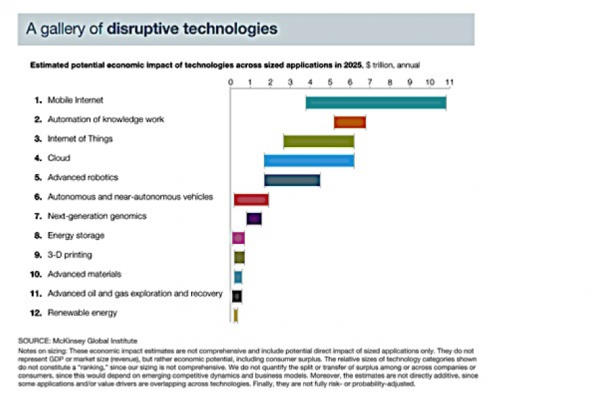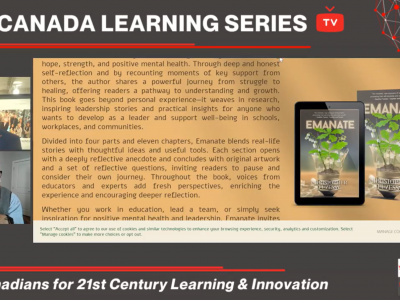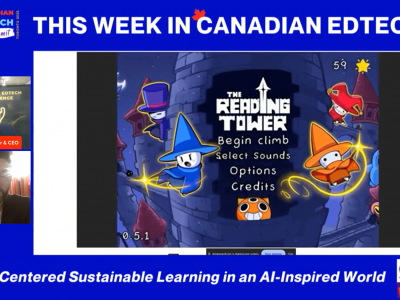by Timothy Gard, TDSB Educator & MSL Report Contributing Writer
Why is student voice so important in today’s classroom? How important is it to encourage, develop, sustain and help mature student voice in your classroom? Let me offer a few ways that you can encourage student voice in your classroom and school by using technology.
Creating a classroom community where students feel part of the learning journey is something that every teacher should aspire to accomplish. Without student voice then quite often the classroom becomes a disparate place in a world where information is overwhelming and opinions about this information proliferates exponentially while students feel overwhelmed with few skills to help them sift through this web of information. Students are looking to opine about the information that they are confronted with, and they yearn to be a part of the learning process where they can participate responsibly in an environment that is so very important to them. How do we engage students even further in their education so that feel a part of the process rather than disconnected from the process? How do we create a learning environment where they can participate in the classroom and express their opinions and thoughts about how they learn freely and safely where the environment is responsive, exciting, and transparent – a learning context that will have a huge impact on their approach to the world around them?
With the ever burgeoning movement into Inquiry-based learning where collaboration is the norm teachers are finding that students are encouraged to become more engaged in their learning and to develop a strong voice. Students are encouraged to question their environments – to develop deep questioning skills in order to challenge assumptions that can lead to deeper learning. This in itself naturally encourages students to seek a ‘voice’ and to become part of a community that can dialogue about many different kinds of problems that they face in their own learning communities and the ones that the world faces from day to day. Working together necessitates a strong personal voice. I believe that this voice can be developed, sustained and matured in classroom and school contexts where technology is used to enable and enhance this voice. What better way to develop ‘voice’ in the classroom then by using the ‘voice’ that they’re already accustomed to and using all of the time?
Let me explore three different ways that technology can help capture and mature student voice. This is in no way exhaustive. As a collaborator I hope these ideas either foster your own thinking about encouraging student voice, or they help you to forage your way through the various tools of technology to enhance student voice in your classroom and your school. Creating student voice also assumes, I think, that teachers have a voice in their schools. There is a reciprocal relationship between a teacher who feels engaged and part of a learning community and a student who wishes the same. If teachers feel that they do not have a voice in their school and are disengaged – maybe even disenfranchised – from their school then the likelihood of their ability and desire to model what a student ‘voice’ would and should look like becomes negligible. My three points then are as much about encouraging a teacher community of ‘voce’ as creating, sustaining and maturing a community of learners where student voice is active.
Firstly, a solid Learning Management System (LMS) that is simple, mobile and ‘thin’ is necessary. Learning Management Systems can mean many different things to many different people in education today. I’m not about to go into a detailed discussion and review of the various incarnations of these different systems. For the purposes of this short piece I understand a Learning Management System to be a bit more inclusive than what is presently being used in many school districts. Today it is possible to use a LMS that incorporates school and district wide communication using many different forms of online communication that includes all stakeholders, including parents, students and teachers. Further, it also includes rigorous assessment components, digital portfolios, the sharing of information in seamless ways either via the more traditional blogging component or via collaborative ‘conversations’. This LMS should be incorporate rich tools for all forms of communication and should be 21st Century ready, including the ability to be platform agnostic. It must be easy to navigate, even easier to understand and ‘thin’ so that the simplicity of the system overshadows the power that rests ‘underneath the hood’ of the technology.
A solid LMS allows students to ‘connect’ with their learning environment in a seamless way mostly via a mobile device. This community then creates an online environment that gives form to student voice. In this way, students can belong to a whole chorus of voices in a school community, including the teacher voice. School life becomes something that actually happens ‘in the cloud’ but has an impact ‘on the ground’ because students are able to feel engaged in a real-world environment that will no doubt become something even more robust at the technological revolution evolves.
An LMS also give students the ability to develop some autonomy in their learning. They take charge of the direction and the impetus of learning. Either in individual assignments or in assignments where co-laboring is happening the students feel that they are able to communicate their thoughts, feelings and experiences that allow for transparency and accountability. School then becomes a seamless experience and students are able to conjoin the often disparate connections that exist when there isn’t an opportunity to communicate about the ‘whole’ but only the parts of their educational experiences.
A second way that technology can be used to encourage student voice is to harness the power of the ‘smartphone’. This kind of technology speaks more to older students however as time moves on and student safety becomes even more paramount we will find younger students employing smartphone technology in their day-to-day lives. I see it happening more and more. These pocket sized powerful computers are ubiquitous in students’ lives today. That’s simply a truism. And since they’ve been an ever-present form of communication today more and more companies are developing the software and cloud technologies to help enable and harness these technologies for teaching and learning. Student voice becomes ‘on the go’ with reflections posted as necessary and in real-time. Teachers can have students use the new ‘laptop’ and ‘tablet’ to enhance inquiry, engage in disruptive technologies so that they can gather scientific evidence in real-time. How about brainstorming that happens in real time, or blogging while visiting a museum exhibit based on a student’s perspective, or asking them to survey their friends via a chat network about a subject in media literacy, or interview and post a podcast right from their smartphone? This is possible now.
 This engages students and while they’re engaged they can also explore better ways to manage the responsibility that comes along with this pocket-sized power. And student voice? It’s enhanced because we’ve tapped into their world, and given them reasons to make use of this world in ever more responsible ways. This technology is not going away and so why not use it to enhance student voice? In fact, the mobile Internet is growing exponentially and it’s impact on the world of commerce and education will also increase. Why then do we silence this ‘voice’ in our classrooms?
This engages students and while they’re engaged they can also explore better ways to manage the responsibility that comes along with this pocket-sized power. And student voice? It’s enhanced because we’ve tapped into their world, and given them reasons to make use of this world in ever more responsible ways. This technology is not going away and so why not use it to enhance student voice? In fact, the mobile Internet is growing exponentially and it’s impact on the world of commerce and education will also increase. Why then do we silence this ‘voice’ in our classrooms?
We know that video and graphics are powerful mediums. It’s easy to post a video on the common platforms of today and most of these postings are simply people expressing themselves, or showcasing their ‘voice’. It’s extremely important that we continue to understand and harness these technologies for use in the classroom. And there are simple ways to do this even in a primary classroom. I’ve written before about Adobe Voice. This application allows young and older students to express themselves in a very creative way without spending too much time working with the ‘technologies’ behind the scenes. It allows them to tell their story. Really, giving students ‘voice’ is about allowing them to tell their story, to explain and express their narrative so that communication is made more transparent and students are able to feel that school meets them in their world context and then allows them to feel that education is relevant and powerful to their personal situation in life.
Explore the many ways that video can help to better communicate a bigger student voice in the community of learning. Students can then feel that they can express their feelings in a way that harnesses their natural ‘narrative’ that is so powerfully expressed via video and graphics. The students then become co-participants in the partnership of learning and through this process develop a better understanding of the complexity of learning both in their relative contexts and in the bigger system of the world. With the ease of video recording and powerful software that is so very easy to use student voice can only be enhanced if we create the pedagogically sound learning situations that invite students to share their voice. This can only create a more cooperative learning environment where both students and teachers are involved in co-learning which I believe will lead to an ever deeper understanding of the world in which we live.
In short, technology is a natural way to encourage student voice in classroom and school communities. What are you doing to help them utilize these ‘new tools of the trade’ to engage their natural way of expressing themselves in the learning contexts of today? Technology will help students embrace their classrooms and schools and feel empowered to become ever more active in changing their learning community and in the long run, the world around them. The ideas above are some of the ways you can empower student voice in your school. And those ideas can be enhanced, tweaked and changed to suit your environment. They will however not make any difference if you aren’t willing to take the risk and get involved in disrupting education with disruptive technologies. The time is now. Let’s give today’s students more ‘voice’!









